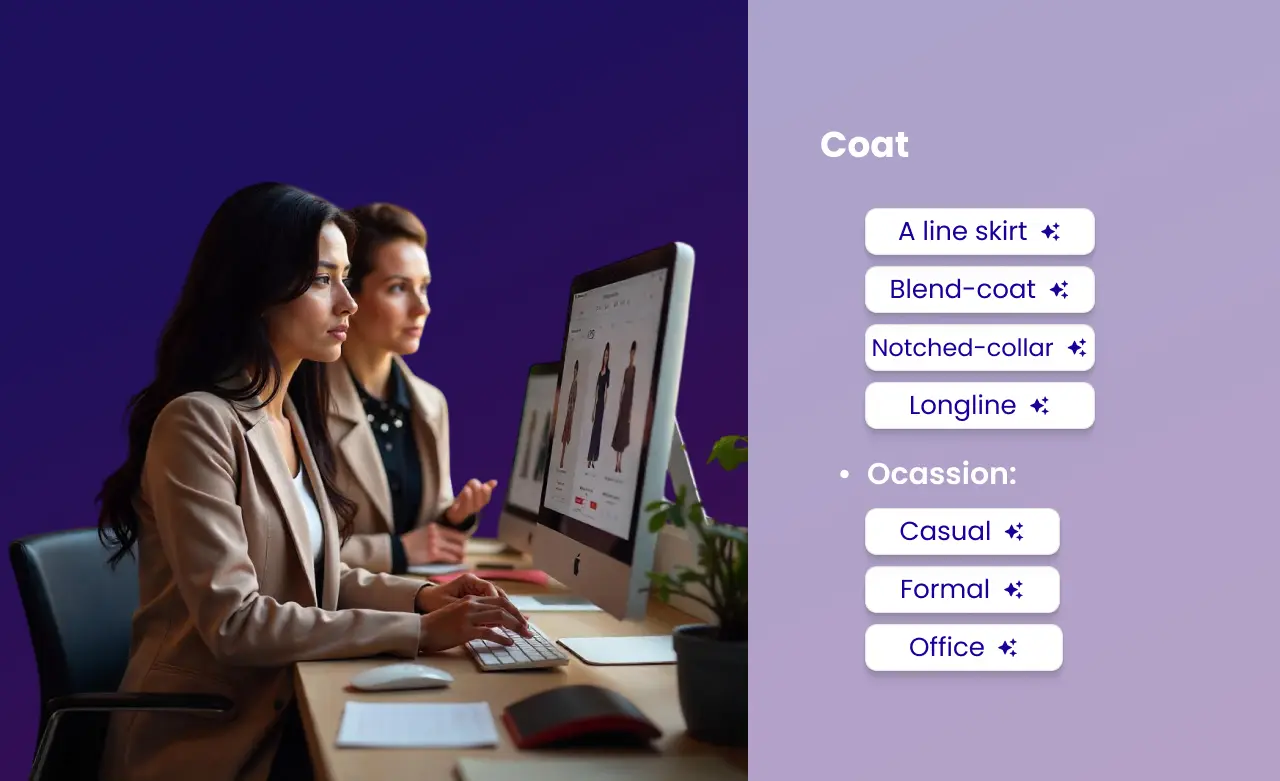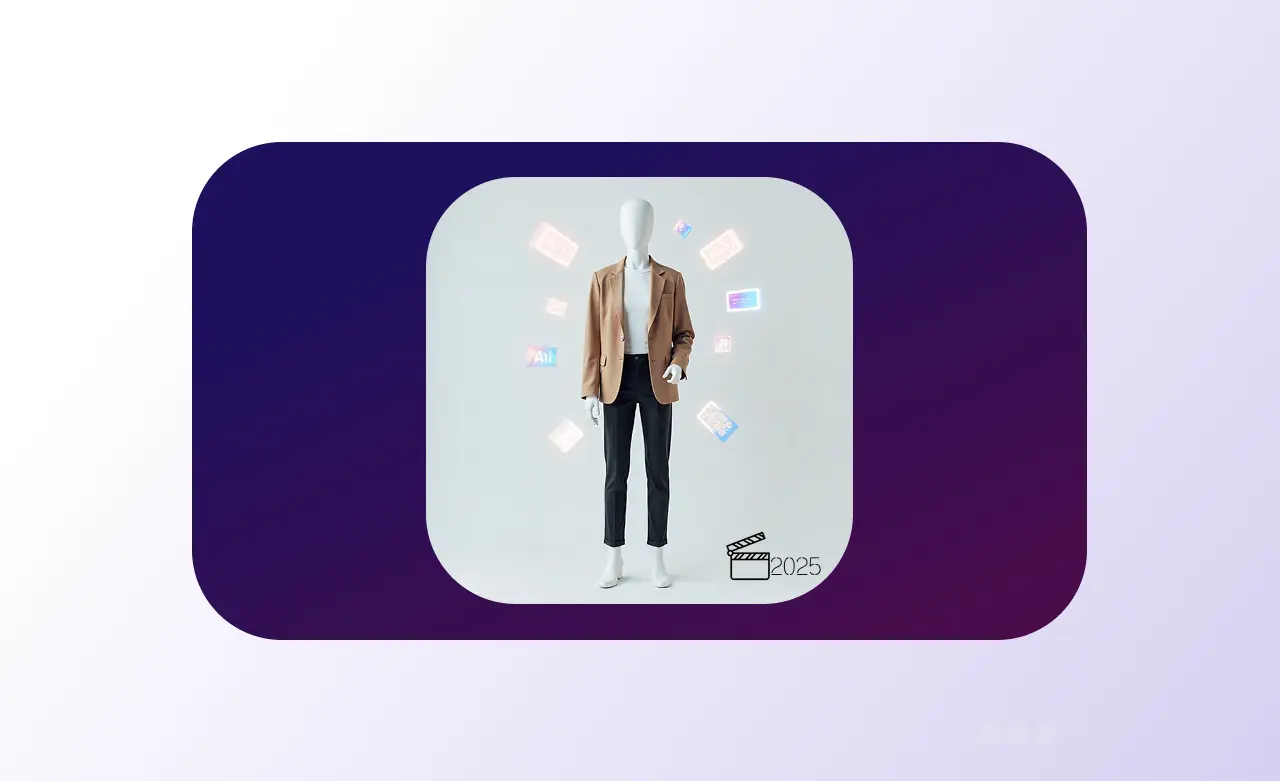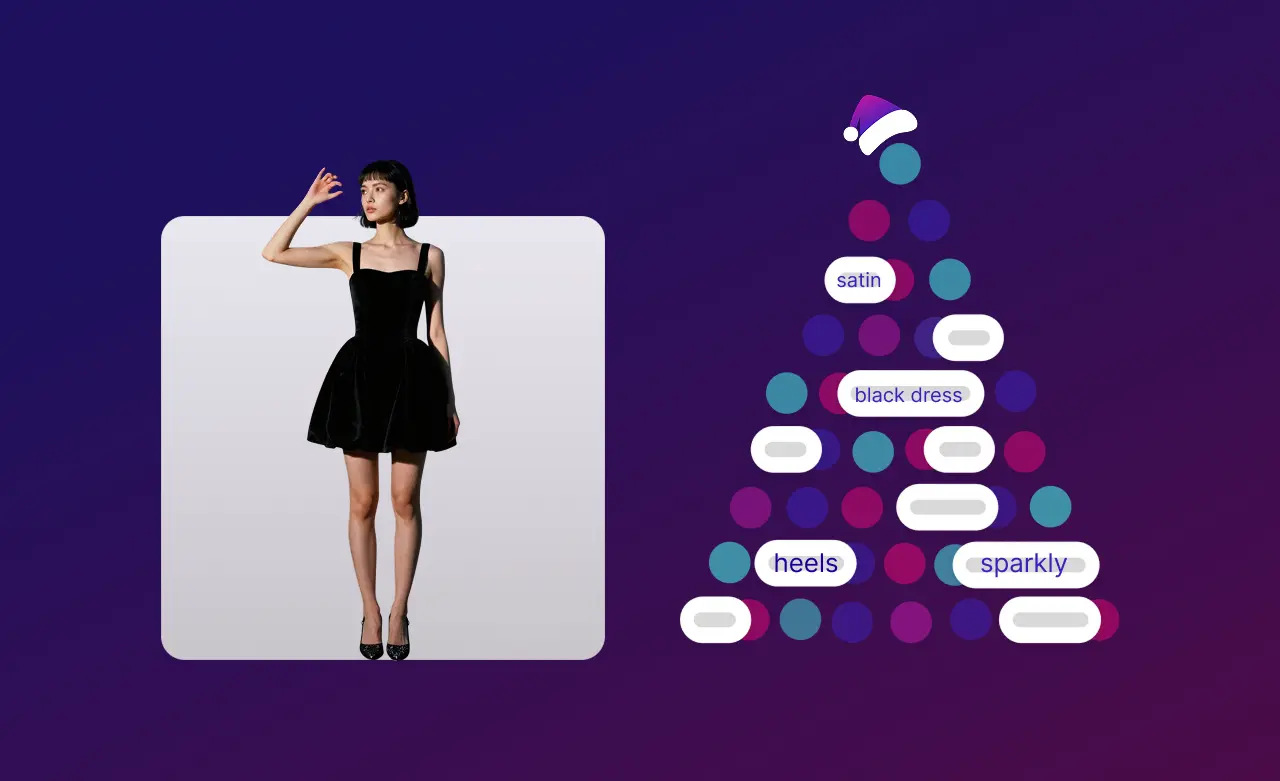Introducing Intelligent Product Tagging: Artificial Intelligence Meets E-Commerce

AI (Artificial Intelligence) is entering every part of our lives. This smart technology can be seen almost everywhere, from self-checkout counters and automated security checks at airports. Consequentially, according to a PwC report, Artificial Intelligence, including intelligent tagging is expected to boost global GDP by 14%, or $15.7 billion, by 2030.
It's pretty much assumed that AI will expand rapidly in the coming years, with companies like Google and Microsoft already investing extensively in new AI projects. For example, Google's £400 million takeover of DeepMind, a start-up that focuses on software and machine learning with positive effects, is only one of the planned investments as the technology's promise becomes a fact. Other companies like Apple, Facebook, and IBM aren’t staying behind this significant trend.
The e-commerce industry is no exception. By the end of 2021, global e-commerce transactions are expected to hit $4.88 trillion. Furthermore, the global pandemic has altered people's buying habits, increasing their appetite for internet shopping more than ever as it satisfies user desires without imposing any physical constraints. That’s why many e-commerce companies are now using AI, including intelligent tagging, to understand their clients better, discover new leads, and improve customer service.
Catalog management is one of the e-commerce areas that AI, particularly intelligent tagging, widely transforms. It's not always easy to keep track of your catalog. The level of catalog organization affects the ability of the company to sell its products across markets and increase product acquisition, which leads to more conversions.
Intelligent product tagging based on Artificial Intelligence is the answer to challenges related to catalog management. In this article, we’ll talk about tags, intelligent product tagging , and how this technology can help e-commerce managers streamline their operations and increase their revenue.
The Role of AI in Enhancing Personalization in E-Commerce
One of the most significant advantages of AI-driven intelligent product tagging is its ability to fuel personalized shopping experiences. By accurately tagging products based on detailed attributes, retailers can offer more targeted recommendations to customers, leading to increased engagement and sales. This personalization can extend beyond product suggestions to include personalized promotions, pricing strategies, and marketing efforts, all of which are guided by real-time data insights. AI-driven personalization helps retailers meet individual customer preferences, ultimately increasing customer loyalty and retention.
What are product tags?
Products must have tags for the catalog management system to be effective. Product tags are a set of additional attributes that apply detailed definitions and metadata to base-level product specifics. Your product title and introduction will be essential information, while tags will provide more in-depth information.
A range of tags is assigned to each product in an e-commerce store to define its characteristics, features, and category. Each tag would contain facts about the product, and anything from color and size to type and brands can be included.
A skirt, for example, may have tags like white, maxi, midi, silk, summer, and soon, containing all the necessary information to affect a shopper's buying decision and sort products based on their specific needs.
You can improve search features, product ranking, and product ratings while also simplifying the inventory management process by adding attribute metadata to your products. The method of retail product tagging allows retailers to apply logos to their merchandise.
Suggested read: The Complete Guide for Automatic Product Tagging in E-Commerce

What is product tagging?
Conventional product tagging tactics take along time and a lot of effort. Based on the number of products in a store, a traditional manual tagging method can take anywhere between 30–40 hours per week, identifying from 200–300 items a day. Even then, it's possible that the employee misidentifies a summer dress like a red evening gown, resulting in a slew of other discrepancies.
Consider the impact if 500 items were misclassified. Because of the way these items were tagged, there's a chance they won't show up in search results, which will be a colossal mistake for retailers. Human fatigue often disrupts accuracy. Manual tagging can have an effect on employees' energy and morale due to the extensive details and time-consuming nature of the job.
Furthermore, manual product tagging can lead to poor catalog management, which can result in a number of issues:
- Supply chains that are too complicated to satisfy consumer demand in real-time.
- For new products, this will mean a time-consuming digitization process.
- Search results that are incorrect and contribute to a poor shopping experience.
To avoid these issues, catalog data must be well-organized and provide correct product details. It would be almost impossible to do this if you run the retail tagging process manually. There is, however, another choice. With the emergence of AI (Artificial Intelligence), new methods of automating retail operations, such as using an automated product tagging platform, have appeared. To effectively organize the product list, AI-based intelligent tagging, also known as automated tagging, is replacing manual tagging, saving a lot of time and resources.
Let's take a closer look.
What is intelligent product tagging?
Intelligent product tagging takes care of retail tagging for you through a completely automated process that requires no human intervention. This improves operational stability and catalog loading times while also enhancing tag accuracy. This is a win-win opportunity with any shop trying to strengthen its brand marketing strategy.
Auto tagging organizes and marks images in the product catalog based on their characteristics using advanced Artificial Intelligence algorithms. Deep Learning is the core of these algorithms to make the fashion tagging process more accessible and eliminate the need for human interference.
Automatic tagging works through analyzing an image and identifying attributes that are related to specific keywords, resulting in accurate metadata for catalog properties.
Another benefit of AI-enabled product tagging is its potential to reduce return rates in e-commerce. Misleading or incomplete product information often leads to returns, as customers receive items that do not match their expectations. Automated tagging ensures that each product has detailed and accurate descriptions, which helps customers make informed purchasing decisions. Implementing site search best practices is essential to further enhance user experience and ensure customers can easily navigate through the rich, tagged product data. By improving product visibility and providing precise product details, retailers can significantly decrease return rates, enhance customer satisfaction, and boost overall profitability.
Intelligent product tagging is a trained Artificial Intelligence technology that can recognize elements in photos in the same way humans can. A brief look at a snapshot is all it takes for us to find out if it's a skirt, a blouse, or a pair of sneakers.
Since this is a daunting task for algorithms, people have handled the majority of product tagging. Computer Vision and Neural Networks, on the other hand, now replicate the workings of the human brain, allowing robots to perform the same activities as humans. Computers can now process an image and remember its features, returning semantic information in textual form, thanks to these technological advances.
Why adopt intelligent product tagging?
Improved product discoverability and search engine click-through volume are some of the benefits of automated image tagging. Furthermore, it enables customers to easily browse the whole catalog and find products that meet their needs. Layering several tags per product helps users to have a smoother onsite experience for a number of reasons, including improved friction.
AI-powered product tagging also facilitates the integration of visual search technology, allowing customers to search for products using images rather than text. As visual search becomes more popular among e-commerce users, having an accurately tagged catalog enhances the effectiveness of this technology. With intelligent product tagging, retailers can better match customers' visual search inputs to the correct items in their inventory, improving search accuracy and driving conversions. Visual search is especially beneficial for fashion e-commerce, where customers may prefer searching by style, color, or design rather than by keywords.
It's important to coordinate and manage the entire inventory based on different customer groups, ranks, and locations using geographic and segment-specific identifiers. Instead of targeting all, modular and adaptive tags would enable you to more effectively hit a certain audience, resulting in better conversion rates.
Intelligent product tagging generates a wealth of valuable data that e-commerce managers can leverage for better decision-making. Detailed product metadata allows businesses to analyze shopping patterns, understand customer preferences, and identify trends. Establishing a clear ecommerce taxonomy helps organize this metadata, making it easier for customers to find what they need. This data-driven approach enables more strategic inventory management, helping companies optimize stock levels, reduce excess inventory, and streamline supply chain operations. Ultimately, AI-driven tagging gives e-commerce businesses the tools to operate more efficiently and stay ahead in a highly competitive market.
In general, a concrete program for automated product tagging in your e-commerce store would aid you in lowering price declines, avoiding overproduction, and reducing development loss, resulting in a more sustainable and financially efficient online strategy.
You shouldn't look at product tagging as some nice addition to your online marketing plan. Instead, think of it as an essential part of your e-commerce shop. A structured collection of relevant tags improves the overall online branding by giving your clients just what they want without having to search for it.
Pixyle.ai's automated product tagging engine will help you get a clean catalog, refine your store's search results, and skyrocket your sales by reviewing the whole product catalog in just a few seconds.
To see how it works, try our demo.
Discover Pixyle Ultimate Dress type Taxonomy Guide
Learn how to structure your catalog in a way that matches how people actually shop.


Boost your sales with AI product tagging
Optimize your eCommerce catalog to improve discovery and conversions.







